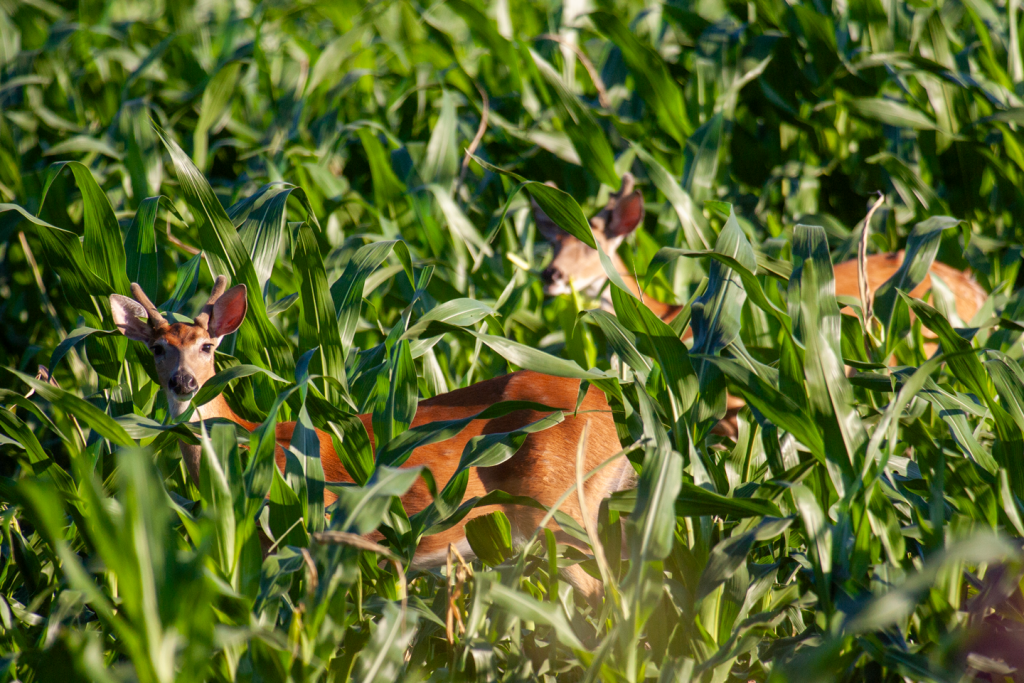Oct 10, 2025
Youth pheasant season includes Special Youth Hunts
The Oct. 18-19 statewide season includes pheasant releases at specific Special Youth Hunt sites.

It’s no secret to those living in the Cornhusker State: Nebraska is serious about its agriculture. Also evident: Nebraskans are proud of their populations of deer and other big game species. Unfortunately, those animals can sometimes be at odds with landowners’ agricultural goals.
Aaron Schott of Silver Creek is among the many agriculture producers who work with the Nebraska Game and Parks Commission to strike a healthy balance between wildlife populations and their operations’ objectives.
The Schott family’s property along the Platte River is certainly well suited for white-tailed deer. The nation’s most popular big game animal loves the riparian habitat with water flowing through towering hardwoods, and, of course, nibbling at nearby croplands. Problem is, whitetails are notably prolific. A large population of herbivorous whitetails can mean significant damage to the corn the Schotts raise to feed cattle as silage, not to mention a hazard for people driving on nearby roads.
The Schotts have long invited family and other hunters to their property during the state’s established deer seasons, but found that the roughly 15 deer harvested during fall and winter were not enough to keep the population in check. Whitetails are especially attracted to the green landscape of the Schotts’ property in late spring and summer, when waters bubbling from irrigation pipes conveniently provide for a drink under a smorgasbord of standing corn.
For the past decade, Schott has invited Game and Parks to observe the deer populations and crop damage on his property in late May and early June. That has resulted in the issuance of a damage control permit.
The damage control permit, one of the depredation options Game and Parks employs to help landowners, is issued when deer harvested during the state’s established hunting seasons aren’t enough to provide sufficient relief from damage.
Dusty Schelbitzki, depredation program manager for Game and Parks, said timing is a big consideration for the issuance of the permits.
“Damage control permits are issued during the growing season to help mitigate damage from the crop field and remove wildlife that are specifically causing damage at that time,” Schelbitzki said. “Overall population control should be done during the regular hunting season with hunters focusing on antlerless harvest.”
Schott recruits the help of a friend in Columbus to develop a list of shooters who are looking to put meat in the freezer. After the names are vetted by Game and Parks, those listed begin visiting Schott’s property. The permits have allowed the harvest of up to 15 deer through the summer growing season.
Schott acknowledges that organizing so many hunters can be a challenge, and said he is fortunate to have help with that part of the job. He said, however, there seems to be no shortage of people looking to put venison on the table. Landowners looking for hunters can contact the nearest Game and Parks district office or visit outdoornebraska.gov/anterlesshunterdatabase.
Schelbitzki said many factors affect depredation, and it usually takes a multi-faceted approach instead of one “silver bullet.”
“It is important to know about the property’s harvest during hunting seasons, types of crop being damaged, amount of local habitat, de facto refuges, what wildlife species may be causing damage, location of damage and timing of damage,” he said. “The more options a landowner is open to, the more effective we can be at helping them reach their goal of tolerable damage.”
One way landowners can limit depredation is to implement an “earn-a-buck” program on their property, Schelbitzki said. That is, require hunters to harvest a doe or two before taking a buck.
Providing access during all hunting seasons is another way, and landowners can even earn money by doing so through the Open Fields and Waters program. Communicating with neighbors to achieve a common goal also is beneficial.
“After being contacted by a landowner, we try to always meet up on site to look at the damage to make the best possible recommendations,” Schelbitzki said. “This is important because every situation is different and some depredation options may not be as effective as others.”
Game and Parks also sometimes employs hazing devices, such as propane cannons and pyrotechnics, and exclusion tactics such as fencing and stack yards.
Damage control permits usually allow the harvest of only does, which make the most impact on population. If a permit does allow bucks, the antlers must be turned into Game and Parks. No money changes hands during the process and meat from harvested animals must be utilized.
“These aren’t trophy hunters by any means,” Schott said. “They’re in it for the meat.”
He said deer management during the summer is viewed as a chore, not recreation.
“If you (get put on the list, but later) can’t or don’t participate, there usually isn’t a second round,” Schott said. “When given a chance to help control the deer population, we need results.”
The approach is working. Instead of observing herds of 50 on and near the family property as before the permits were issued, Schott sees them numbering about half that. He no longer sees the extensive crop damage of the past, where deer had made it appear as if a herd of cattle had been turned loose in the corn.
“We’ve seen that (damage) dramatically cut back,” he said.
Less damage to the crops, and less chance of his vehicle colliding with a deer during his nightly drive into Silver Creek.
“I don’t want one on my bumper. I’d rather have it on my plate,” Schott said.
To learn more about the Game and Parks’ programs to assist landowners experiencing problems with wildlife species, visit outdoornebraska.gov/depredation or contact a Game and Parks district office in Alliance, North Platte, Lincoln or Norfolk.